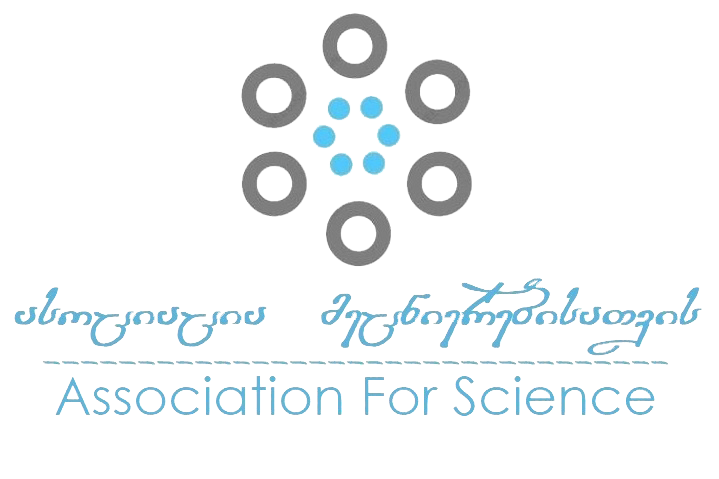Neologisms as a Driving Force for the Development of Lexis in the German Language
DOI:
https://doi.org/10.52340/sou.2023.19.07Keywords:
German language, neologisms, word formation, vocabulary, English languageAbstract
Quick scientific and technological progress has caused major changes in the lexical stores of languages. The aim of the present article is to find out, what changes occur in the German lexicon against the background of the scientific or technological achievements, how the last events are reflected in neologisms, how neologisms are born and what sorts of neologisms are abundant in the modern German language. We use several methods for the research, namely, descriptive method, method of immediate constituents and method of substitution. The article analyses neologisms of the modern German language according to the way of nascence and semantic parameters. New words are discussed which have arisen during the corona pandemic. Due to the research there has been elucidated that in the newest tendencies of the modern German language there is clearly revealed the influence of neologisms. The greatest share among the mentioned neologisms is made by nouns that denote objects of phenomena important for the society. Composite models are very productive, namely, determinative composites consisting of two immediate constituents. Next in frequency come composites with three members. There also occur composites consisting of four immediate constituents. Word building constructions, where one or two direct constituents are represented by English words, are frequent, too, and certain neologisms are borrowed from the English as completely ready-made words. In terms of frequency, the next place is occupied by adjectives, and verbs are the ones that occur least frequently. In terms of semantics, there occur the different word-building meanings.
References
Barz, Irmhild (1998): Neologie und Wortbildung: Zum Neuheitseffekt von Wor-tneubildungen. In: Teubert, Wolfgang (HG.): Neologie und Korpus, Studien zur deutschen Sprache, Bd. 11, Günter Narr Verlag: Tübingen, S. 11-30;
Bizukojć, Katarzyna (2011): Neue Nominalkomposita in deutschen Newsletter-Texten, Danziger Beiträge zur Germanistik, Bd. 36, Peter Lang Verlag: Frankfurt am Main;
Bußmann, Hadumod (2008): Lexikon der Sprachwissenschaft, Alfred Kröner Verlag: Stuttgart;
Elsen, Hilke (2011): Neologismen, Formen und Funktionen neuer Wörter in verschiedenen Varietäten des Deutschen, Tübinger Beiträge zur Linguistik 477. 2., überarbeitete Auflage, Narr Francke Attempto Verlag: Tübingen;
Elsen, Hilke (2013): Problemzonen der Wortbildung und der Eintrag im Wörterbuch, In: Klosa, Annette (Hg.): Wortbildung im elektronischen Wörterbuch, Studien zur deutschen Sprache, Bd. 63, Narr Francke Attempto Verlag: Tübingen;
Herberg, Dieter (2001): Neologismen der Neunzigerjahre. In: Stickel, Gerhard (Hg.): Neues und Fremdes im deutschen Wortschatz, Aktueller lexikalischer Wandel. De Gruyter: Berlin/New York;
Kinne, Michael (1996): Neologismus und Neologismenlexikographie im Deutschen, Deutsche Sprache №4, Jg. 24;
Peschel, Corinna (2002): Zum Zusammenhang von Wortneubildung und Textko-nstitution, Reihe Germanistische Linguistik 237, Max Niemeyer Verlag: Tübingen;
Schippan, Thea (1992): Lexikologie der deutschen Gegenwartssprache, Max Niemeyer Verlag: Tübingen;
Schröder, Marianne (2006): Wortbildung in der Hörfunknachricht. In: Fix, Ulla et. al. (Hg.): Zwischen Lexikon und Text, Lexikalische, stilistische und textlinguistische Aspekte, Abhandlungen der Sächsischen Akademie der Wissenschaften zu Leipzig, Philologiscg-historische Klasse, Bd. 78, Heft 4, Stuttgart/Leipzig;
Steffens, Doris (2005): Neologismen im Deutschen = Angloamerikanismen? In: Partridge, John (Hg.):Getting into German, Multidisciplinary Linguistik Approaches, German Linguistic and Cultural Studies17, Peter Lang: Oxford et al;
Tellenbach, Elke (2002): Neologismen der neunziger Jahre, In: Barz, Irmhild et al. (Hg.): Das Wort in Text und Wörterbuch. Abhandlungen der Sächsischen Akademie der Wissenschaften zu Leipzig, Philologiscg-historische Klasse, Bd. 76, Heft 4, Stuttgart/Leipzig;
Duden Online-Wörterbuch: [am 11.12.2020]: https://www.duden.de/woe-rterbuch;
Klosa-Kückelhaus, Annete: Bilder und Metaphern im Wortschatz rund um die Coronapandemie. 5 November 2020: https://www1.ids-mannheim.de/file-admin/aktuell/Coronakrise/klosa_Bilder_und_metaphern.pdf;
Neuer Wortschatz rund um die Coronapandemie: [am 9.12.2020]: https://www1.-ids-mannheim.de/neologismen-in-der-coronapandemie.html;
Neologismen in der Coronapandemie: am [7.12.2020]: https://www1.ids-mannhe-im.de/neologismen-in-der-coronapandemie/;
Zifonun, Gisela: Anglizismen in der Coronakrise. 3 Dezember 2020: https://ww-w1.ids mannheim.de/fileadmin/aktuell/Coronakrise/zifonun_anglizism-en.pdf



